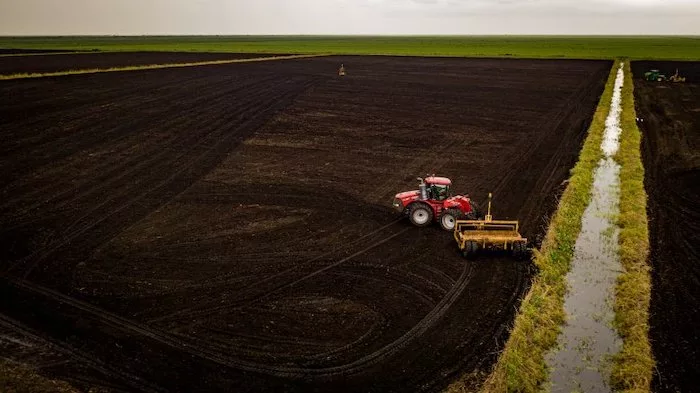Shortly after the Fanjul family arrived in Florida from Cuba in 1959, they set up a sugar-production plant on 4,000 acres of land in Western Palm Beach County. Harvested by hand, the very first crop produced just 10,000 tons of sugar.
Six decades later, that modest operation now encompasses some 190,000 acres across nearly 5,000 individual fields. And the family’s company – now known as Florida Crystals – is part of the world’s largest refiner and marketer of cane sugar with annual production of more than 6 million tons.
Along the way, Florida Crystals has implemented multiple techniques to improve environmental sustainability and increase economic efficiency.
“As a farmer, your land is your main asset,” says Diego Luzuriaga, Florida Crystals' vice president of research and development. “You have to take care of your land, and we’re always working on better ways to do that.”
“The key metric in measuring sustainability is time,” says Florida Crystals' director of sustainability Andy Sauber. “There is an awareness that if we want to be able to continue doing this for a long time, then we have to take care of what we have.”
The company implements that approach through a variety of programs. Florida Crystals’ tractors and harvesters use joysticks and iPad screens enabling the equipment to sync with satellite systems for precision on both the leveling fields and the creation of furrows.
A soil sample is taken from each field every year and tested for phosphorous and potassium levels. The results are analyzed by Florida Crystals soil scientists to propose ways to improve growing conditions.
“It’s like going to a restaurant and having different choices on the menu — only we have about 300 different choices or formulas to choose from. That way we can be very precise and give the soil exactly what is needed,” Luzuriaga says.
Lack of moisture is rarely a problem for Florida farmers. If anything, the Sunshine State typically receives too much rain, especially during summer when thunderstorms pop up nearly every afternoon.
Florida Crystals uses that rainfall in a series of canals and approximately 500 pumps to lower or raise the water level based on the season. The canals also move water from one planting zone — rice, for example — to another, such as the sugarcane fields.
“So the rice fields serve as reservoirs to hold on to the rainwater we get during the summer. That’s another way that rice is a key crop for us from a sustainable point of view,” Luzuriaga says.
Perhaps the greatest example of sustainability at Florida Crystals is its use of leftover fiber from milling the sugarcane to produce electricity. Each sugarcane stalk contains about 6 ounces of fuel known as bagasse, which can be transformed into energy through an on-site cogeneration facility.
“There’s just an enormous amount of energy that is grown here with the cane,” Sauber says. “We are 82% powered by renewable energy company-wide. That includes all the operations as well as the corporate offices.”
In addition to repurposing the bagasse, Florida Crystals repurposes approximately 1 billion gallons of water removed from the sugarcane prior to processing. And the leftover ash from burning the bagasse is returned to the fields as fertilizer.
“There is almost zero waste from our sugarcane,” Luzuriaga says. “The cane brings its own electricity and water, and it produces its own fertilizer. It’s the most sustainable crop in the world.”



![[Technology Corner] A Big Step Forward for Interoperability & Data Sharing](https://www.precisionfarmingdealer.com/ext/resources/2025/12/12/A-Big-Step-Forward-for-Interoperability--Data-Sharing.webp?height=290&t=1765565632&width=400)


